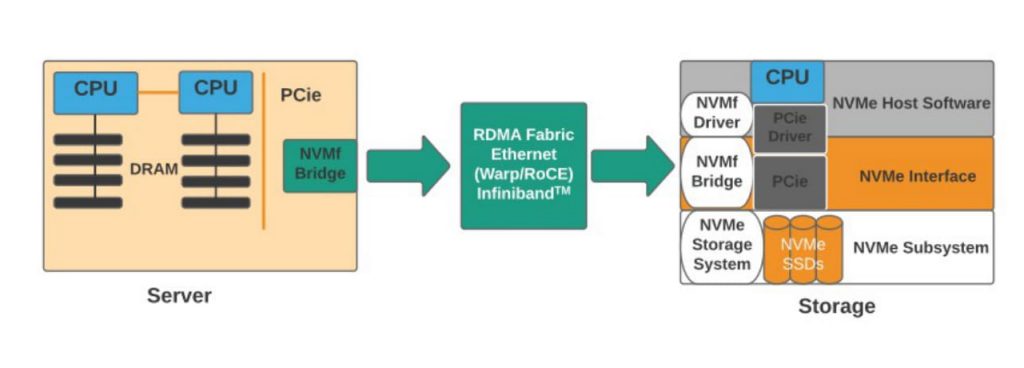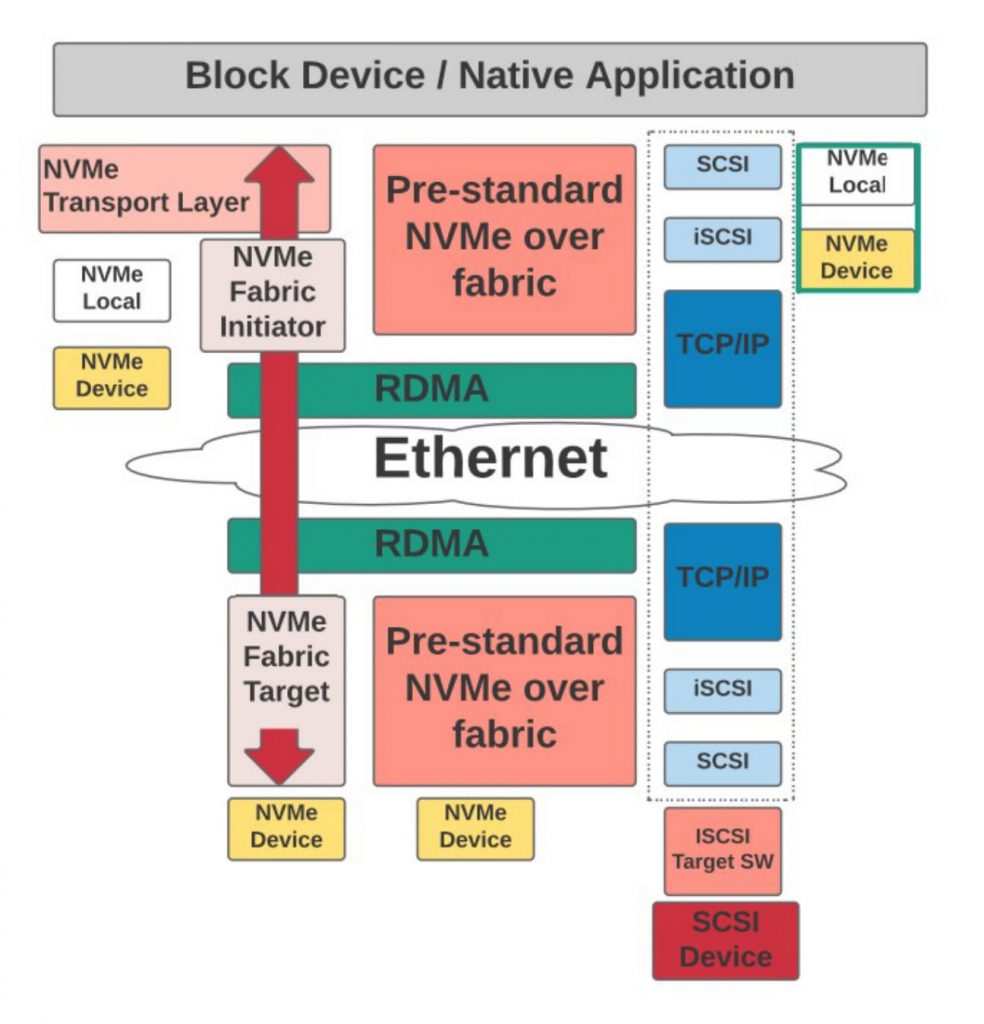NVMe-oF – The future of cloud storage
Access to online content has been increasing exponentially in recent times, especially during the COVID-19 pandemic. This explosion in shared data has made it vital that we implement storage mechanisms that store it data without affecting the user experience.
The Non-Volatile Memory Express (NVMe) protocol on the underlying fabric (known as NVMe over Fabrics or NVMe-oF) is a promising solution for these huge data requirements so that emerging technologies — such as artificial intelligence (AI) and machine learning (ML) — can function effectively. The blazing speed of NVMe-oF provides a way to access the benefits of NVMe over distance, utilizing the full potential of NVMe SSDs.
The NVMe specification has been the dominant interface for storage devices for several years. Its advantages include low latency, scalability, and high performance. These advantages are available because NVMe uses a paired queuing mechanism, similar to SATA SSDs but at a different scale. The main difference lies in the huge number of queues that NVMe supports — 65,535 (64K) queues, where each queue can hold up to 64K commands. These queues increase the performance vector exponentially. NVMe also provides non-contiguous queues, metadata that can be used for end-to-end data protection, arbitration mechanism, and much more.
With the initial development of NVMe for locally attached memory, the idea of whether we could use NVMe over the network using the bandwidth provided by the Ethernet bus seemed fascinating. Further, the coalescence of a high-speed, flash-based memory array with the advantages of an underlying fabric paved the way for NVMe-oF.
NVMe-oF offers simultaneous multiple host access, high input/output operations per second, multiple channels between host (CPU) and storage, and reduced latency over distance. NVMe-oF is compatible with a greater number of underlying transport layers, such as Fibre Channel, RoCE, and TCP/IP. The common architecture of NVMe-oF for these transport layers provides enterprises a way to use it over their existing infrastructure to overcome its main disadvantages — principally the cost associated with implementing NVMe-oF.
As of today, SSDs are becoming the dominant storage format. To get an early lead in the market, companies need to invest in their interface infrastructure because modern-day applications will continually increase the demand for higher performance.
For more detail on the performance characteristics of the various possible combinations of NVMe with underlying transport fabrics and to get a full treatment on the advantages of NVMe-oF and a presentation of case studies that show how it can help you verify SSDs over distance, download this whitepaper, NVMe-oF: simple, invisible fabric for distributed storage networks.
 Dhruv Garg is a Senior Member of Technical Staff on the Questa Verification IP team at Siemens EDA, specializing in the development of NVMe and CXL. He received his B.Tech degree in Electronics and Communication from Jaypee Institute of Information Technology, Noida and his M.Tech degree in VLSI from National Institute of Technology (NIT), Jalandhar.
Dhruv Garg is a Senior Member of Technical Staff on the Questa Verification IP team at Siemens EDA, specializing in the development of NVMe and CXL. He received his B.Tech degree in Electronics and Communication from Jaypee Institute of Information Technology, Noida and his M.Tech degree in VLSI from National Institute of Technology (NIT), Jalandhar. 



